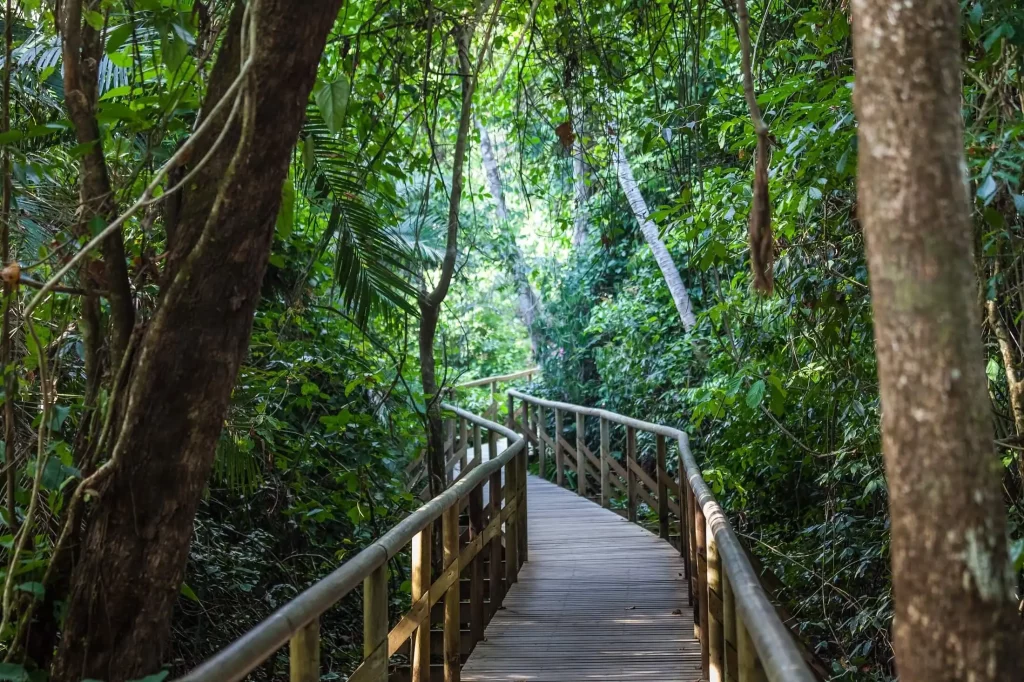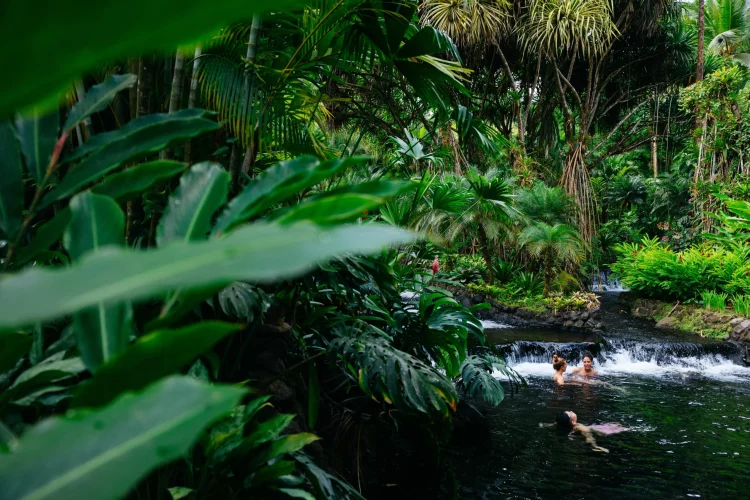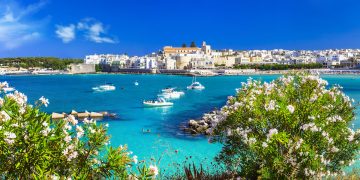Nestled between the Pacific Ocean and the Caribbean Sea, Costa Rica is a land of striking natural beauty and extraordinary biodiversity. This small Central American country has become a global leader in eco-tourism, attracting nature lovers and eco-conscious travelers from around the world. With its rainforests, volcanoes, beaches, and a commitment to sustainability, Costa Rica is often described as an eco-paradise. But is it really the ultimate destination for travelers seeking an environmentally friendly experience? In this article, we’ll explore Costa Rica’s eco-tourism credentials, the best ways to experience its natural wonders sustainably, and how you can make the most of your trip while minimizing your environmental impact.
Introduction: Costa Rica as an Eco-Tourism Haven
Costa Rica’s commitment to environmental preservation is unparalleled. In fact, over a quarter of the country’s land is protected in national parks, reserves, or conservation areas. This dedication to preserving natural habitats has helped Costa Rica become a recognized leader in sustainable tourism. The country’s impressive commitment to eco-friendly practices is reflected in both government policies and the attitudes of its citizens, who take pride in their natural resources.
Costa Rica has long been a champion of biodiversity, boasting a wealth of plant and animal species, many of which are endemic to the region. Whether you’re trekking through cloud forests or enjoying the pristine beaches, Costa Rica offers a variety of ecosystems, each with its own unique appeal. The country’s thriving eco-tourism industry focuses not only on protecting these ecosystems but also on promoting responsible travel that benefits both the environment and local communities.
For those seeking an authentic eco-friendly getaway, Costa Rica offers a wealth of experiences that allow visitors to immerse themselves in nature while minimizing their ecological footprint. From staying in sustainable eco-lodges to exploring the country’s national parks with expert guides, there are countless ways to enjoy Costa Rica’s beauty without harming its fragile ecosystems.
Biodiversity: Costa Rica’s Diverse Ecosystems and How to Explore Them Sustainably
Costa Rica is a biodiversity hotspot, with an incredible array of plant and animal species. Despite being roughly the size of West Virginia, Costa Rica is home to nearly 6% of the world’s biodiversity. This makes it a dream destination for nature enthusiasts, wildlife photographers, and anyone interested in exploring the rich variety of ecosystems that Costa Rica has to offer.
Cloud Forests: A Mystical Ecosystem
One of Costa Rica’s most unique ecosystems is its cloud forests, which are found in the higher elevations of the country, such as the Monteverde Cloud Forest Reserve. These mist-covered forests are home to an abundance of plant species, including orchids, bromeliads, and towering trees, as well as a rich array of animal life. The Monteverde Cloud Forest is renowned for its diverse bird population, including the famous Resplendent Quetzal, and for its role in preserving fragile ecosystems.
To explore the cloud forests sustainably, many eco-conscious travelers opt for guided tours led by local naturalists. These guides are not only knowledgeable about the flora and fauna but are also dedicated to preserving the environment. Many tours follow sustainable practices, such as limiting group sizes to reduce environmental impact and promoting responsible photography practices.
Rainforests: The Lungs of the Planet
Costa Rica’s rainforests are among the most biodiverse in the world. The Corcovado National Park on the Osa Peninsula is often referred to as one of the most biologically intense places on Earth. This tropical paradise is home to jaguars, tapirs, sloths, and an incredible diversity of bird species. The park is part of the larger Osa Conservation Area, which also includes nearby reserves like the Piedras Blancas National Park.
Exploring Costa Rica’s rainforests is best done with a guide who can help you navigate the dense vegetation while pointing out the myriad creatures and plants that call the forest home. Sustainable tourism companies in Costa Rica emphasize leaving no trace, which includes staying on marked trails, avoiding feeding the animals, and reducing noise pollution to protect the animals’ habitats.
Beaches and Marine Life: A Coastline of Wonders
Costa Rica’s beaches are as diverse as its landscapes, ranging from the wild, untamed shores of the Pacific to the more tranquil Caribbean beaches. The country’s marine life is equally impressive, with opportunities for snorkeling and diving in protected areas such as the Cahuita National Park on the Caribbean coast or the Ballena Marine National Park on the Pacific side.
In order to preserve Costa Rica’s marine ecosystems, many eco-tourism companies promote sustainable activities such as guided snorkeling tours, reef restoration projects, and turtle conservation programs. The beaches of Costa Rica are also home to important nesting sites for endangered sea turtles. Travelers can participate in nocturnal turtle watching tours to observe the nesting process in a way that respects the animals’ natural behavior and ensures their protection.

Eco-Friendly Hotels and Tours: Where to Stay and What to Do in an Eco-Conscious Way
When traveling to Costa Rica, choosing eco-friendly accommodations and tours is crucial for minimizing your environmental impact. Fortunately, Costa Rica has an abundance of sustainable lodging options, many of which are set in the heart of nature.
Sustainable Lodging: Sleep Close to Nature
Eco-lodges in Costa Rica are often designed to blend seamlessly with the surrounding environment, using local materials and sustainable energy sources. Many lodges also focus on water conservation, waste management, and reducing the carbon footprint of their operations.
A prime example of sustainable lodging is the Lapa Rios Eco Lodge, located on the Osa Peninsula. This luxurious lodge operates on solar power, collects rainwater, and has a zero-waste policy. Guests can enjoy the lodge’s commitment to sustainability while having direct access to the biodiversity of the region.
Other eco-conscious options include Tree House Lodge, located in the Gandoca-Manzanillo Wildlife Refuge, which offers unique treehouse accommodations and promotes environmental education and conservation.
Sustainable Tours: How to Explore Costa Rica Responsibly
In Costa Rica, many tour operators are dedicated to providing sustainable, low-impact experiences. Whether you’re exploring the rainforests, going white-water rafting, or zip-lining through the canopy, there are numerous ways to engage with nature while ensuring that your activities don’t harm the environment.
For example, companies like the Costa Rica Wildlife Sanctuary and the Corcovado Foundation offer guided wildlife tours that focus on education, conservation, and environmental stewardship. These tours are led by knowledgeable naturalists who are passionate about protecting the ecosystems and helping visitors understand the importance of preserving the country’s biodiversity.
In addition, Costa Rica is a leader in ecotourism certifications. The Certification for Sustainable Tourism (CST) program, introduced by the Costa Rican Tourism Institute (ICT), recognizes businesses that meet strict sustainability standards. When booking activities, choosing CST-certified operators ensures that your travel choices align with the country’s eco-friendly goals.
What to Expect: Essential Travel Tips for Visiting Costa Rica
Traveling to Costa Rica can be a truly enriching experience, but it’s important to keep a few things in mind to ensure that your trip is both enjoyable and sustainable.
Respect Local Customs and Wildlife
Costa Ricans are passionate about preserving their natural heritage, and visitors are expected to show respect for both local cultures and wildlife. Always stay on designated paths, avoid disturbing animals, and never pick plants or flowers. If you encounter wildlife, admire them from a distance without intruding on their space.
Choose Eco-Conscious Transportation
When traveling around Costa Rica, opt for sustainable forms of transportation whenever possible. Many areas are accessible by public buses, and there are also eco-friendly transport options such as electric vehicles, bicycles, or even horseback riding for some tours. When renting a car, consider choosing a hybrid or electric vehicle to minimize your carbon footprint.
Pack Light and Minimize Waste
While exploring Costa Rica’s natural wonders, it’s essential to pack light and minimize your environmental impact. Bring reusable water bottles, avoid single-use plastics, and ensure that any waste is disposed of properly. Costa Rica’s protected areas are pristine, and it’s up to travelers to help keep them that way.
Conclusion: Costa Rica—An Eco-Paradise Worth Visiting
Costa Rica’s commitment to sustainability, coupled with its unrivaled biodiversity, makes it an exceptional destination for eco-conscious travelers. Whether you’re exploring cloud forests, snorkeling in crystal-clear waters, or experiencing the local culture, Costa Rica offers countless opportunities to connect with nature in a responsible way. By choosing eco-friendly accommodations, supporting sustainable tours, and respecting the environment, travelers can experience the eco-paradise that Costa Rica truly is.





















